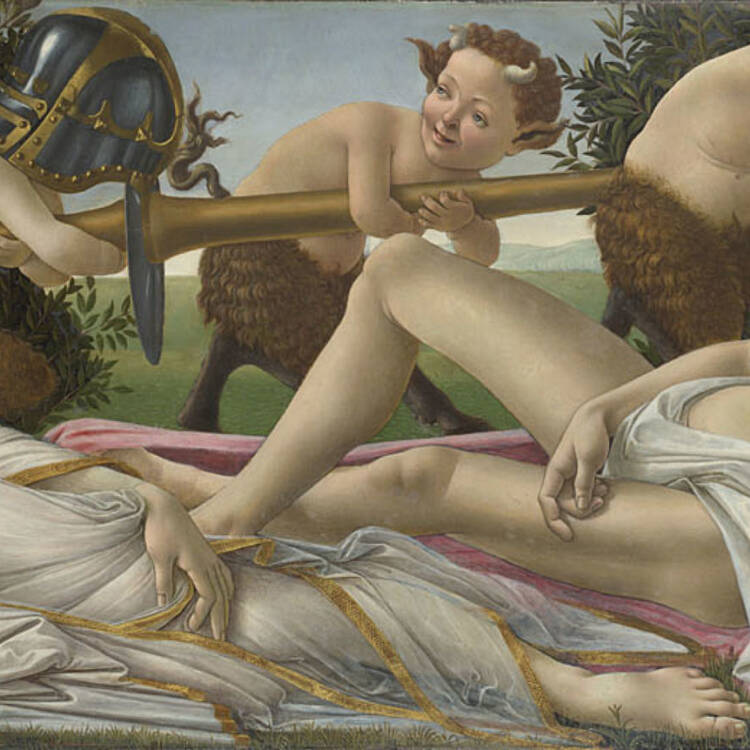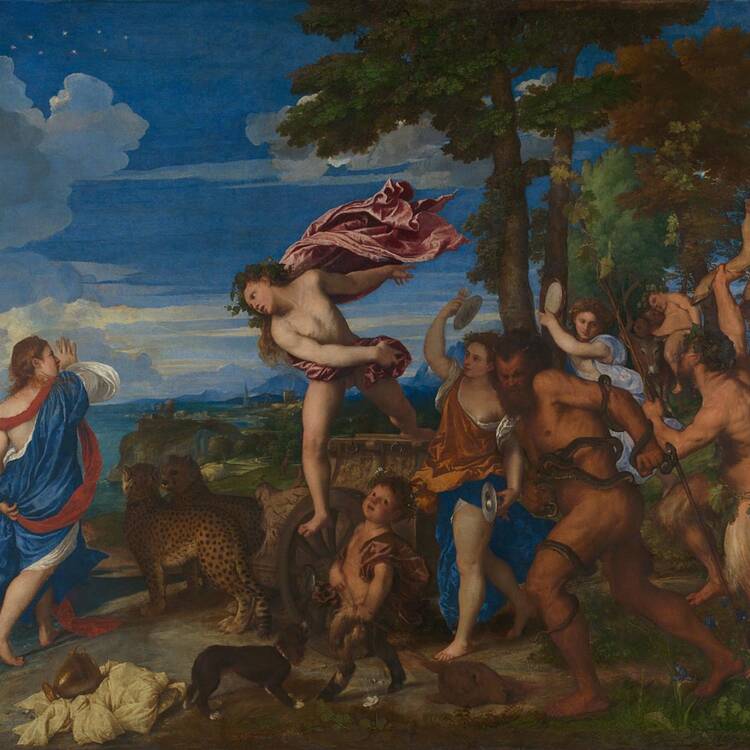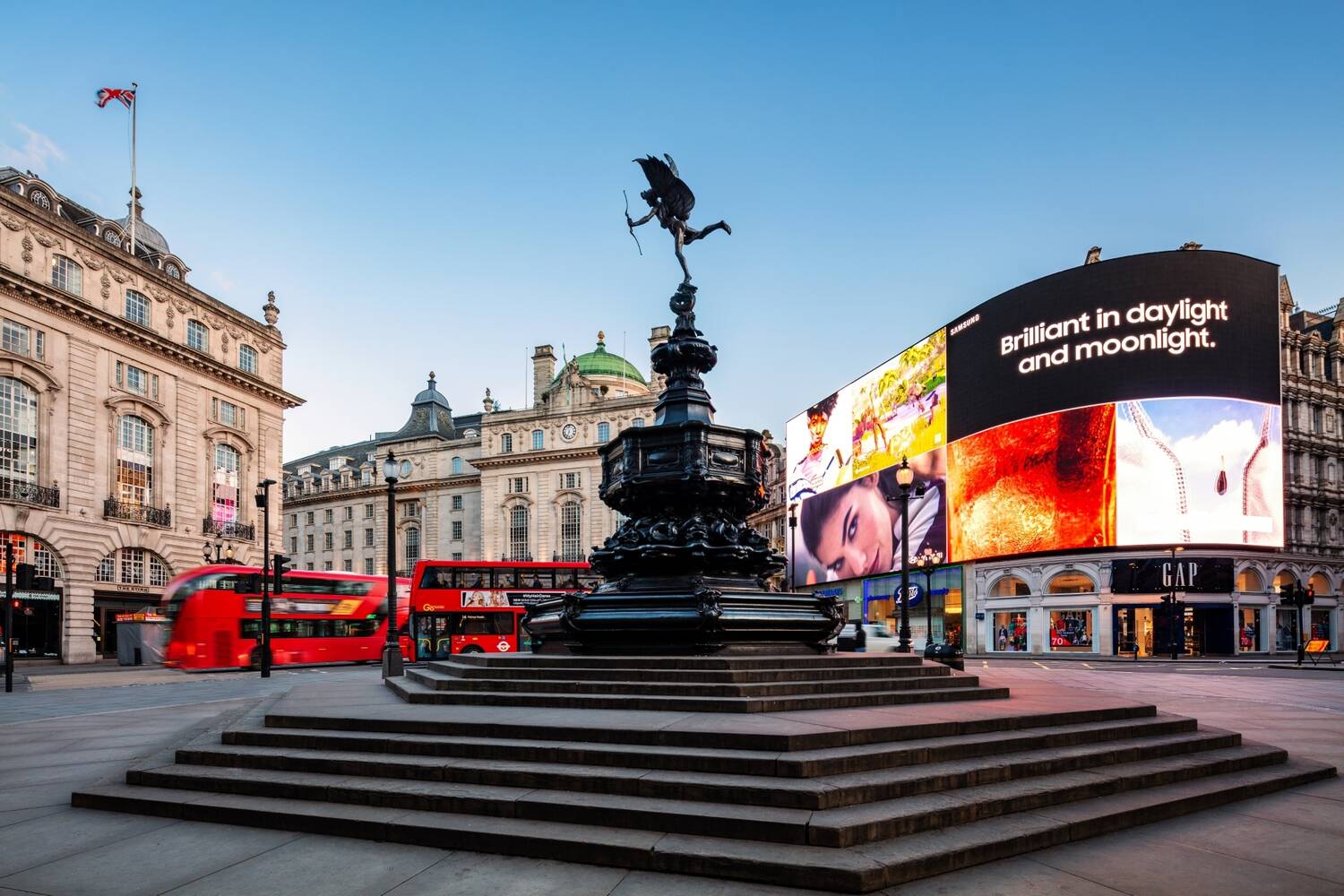Love is in the art! Arts presenter, curator, expert guide and arts writer Kate Bryan has put together a love filled guide through the West End this Valentine's Day.
The Art of Love with Kate Bryan
Reviews
Some of the world’s most famous artworks have been created by besotted lovers, who painted and sculpted their darlings, and this Valentine’s Day there are romantic masterpieces just waiting to be discovered in the West End. Love is in the air and you’ll find it on the city’s streets and in iconic galleries including the National Gallery, Royal Academy of Arts and Stern Pissarro. And if you fancy a bite to eat or drink with your loved one whilst you’re exploring, there’s plenty nearby. We asked arts broadcaster, writer and curator Kate Bryan to pick out her romantic highlights.
There are lots of portraits of couples in art history, but how often do we see visual representations of what love feels like? I’ve selected works that I think get closest to both the peculiarities and spectacular nature of love. Brace yourself as the results are wonderful, unsettling and memorable - from jilted lovers and love at first sight, to the triumph of love over war, these artworks masterfully go beyond notions of traditional romance to uncover the inner truths of what it means to be in love.
STOP ONE: NATIONAL GALLERY
The National Gallery gives me goose bumps every time I arrive. I still can’t believe this world class collection brimming with masterpieces exists and is free to visit. From Michelangelo and Leonardo to Van Gogh and Cezanne, it’s an unbelievable treasure trove and there are some spectacularly romantic works on display. And when you’ve finished taking it in why not impress with fine dining at the Aquavit London, a stylish restaurant showcasing the very best of Nordic cuisine and design.
Titian’s, Bacchus and Ariadne (1520-23) was painted 500 years ago and yet still speaks to us so clearly. Somehow Titian magically conjures that rare feeling when time stands still and two lovers lock eyes for the first time. It’s one of the most popular exhibits at the National Gallery, however it could have been an entirely different kind of painting. Originally, the commission (and generous fee) went to Raphael who died young, paving the way for Titian to steal this moment of glory. It’s an example of a great artist taking a not so straightforward ancient story (this was based on a poem by Ovid) and capturing something that speaks to everyone about a universal idea: love at first sight.
Ariadne, daughter of a King, has been cruelly abandoned on a Greek Island by her lover and watches his ship leave in the distance when suddenly an unruly, drunken party come crashing into the right-hand side of frame. The noisy lot are led by Bacchus, the good time god of wine and pleasure. He’s beautiful, almost wearing a pink velvet robe and, while one romance has ended abruptly, another is about to begin. Titian manages to capture all of this in one picture, full of incident, colour and detail and yet showing two young lovers locking eyes for the first time.
Venus and Mars by Sandro Botticelli (1485) is a gift of a painting. It’s a perfect example of the ideas that preoccupied the golden age of Florentine painting: harmony, idealised beauty and borrowing from the ancient world. But the painting’s also surprisingly modern in its outlook, and it’s a rare example of a woman having all the power in a scene. Botticelli, who created some of the most celebrated Renaissance paintings of all time, here makes a painting which appeals to both our hearts and our sense of humour. The painting, which would have made a fantastic wedding gift, depicts Venus, the goddess of love’s affection for the god of war, Mars. It is an idealised scene where an impossibly beautiful woman and man come together to symbolise love, wisdom and pleasure.
Mars is asleep, presumably after lovemaking and his lover Venus watches over him knowingly. She may be beautiful, but she is powerful and love triumphs over war. If the face of this serene goddess looks familiar it’s because Botticelli conjured the same woman in two other famous works, The Birth of Venus and Primavera. The model is believed to be Simonetta Cattaneo de Candia. Botticelli surely loved this woman, I think he fell in love with her and was moved to immortalise her in his work. He dies three decades after Simonetta and yet still asked to be buried at her feet.
Credits:
Titian, Bacchus and Ariadne, 1520-23 © The National Gallery, London
Sandro Botticelli, Venus and Mars, 1485 © The National Gallery, London
STOP TWO: Eros at Piccadilly Circus
Paris may be known as the city of love, but it’s London that has a permanent memorial fountain topped by the winged Eros. Casting romantic spells over Piccadilly Circus since 1893, Alfred Gilbert created the sculpture to celebrate the Victorian politician and philanthropist, the 7th Earl of Shaftsbury, who worked to replace child labour with school education. The original intention was for the work to depict the Greek God Anteros, the Angel of Christian Charity who also happened to be the brother of Eros, the Greek God of sensual love.
Eros proved a more popular choice in the minds of the public and Anteros was all but forgotten within a few years of installation, perhaps in part due to the work’s proximity to Soho’s lively nightlife! It’s an artwork that sits so comfortably in the minds of Londoners and tourists that we probably neglect to pay it enough attention. The sprightly winged figure is caught in action, weight on one leg as he prepares to redraw his bow. To conjure his composition, which would later become the masthead image of the Evening Standard newspaper, Gilbert fused knowledge of Italian Renaissance sculptures with the more recent art nouveau movement.
Gilbert used bronze for the fountain’s base but demonstrating pioneering technical mastery, Eros was the first sculpture in the world to be cast in aluminium. Upon unveiling the work, Gilbert suffered for his art, receiving backlash for the figure’s nudity and the fountain became an unfortunate magnet for troublemakers, but the work has survived and whether intended or not, it’s become an emblem for love in London.
Eros is also just around the corner from The Wolseley, the café-restaurant famed for its spectacular interior and classic food and seamless service. Look no further if wanting to impress your beau.
Image Credit: Visit London
STOP THREE: Royal Academy
The Royal Academy was founded by artists in 1768 and remains at the heart of London’s creative life. These days David Hockney and Tracey Emin are among the many Royal Academicians bringing tradition into the twenty first century. The RA’s current Francis Bacon exhibition is one of the most jaw-dropping shows I’ve seen in some time and may not be traditionally romantic but includes some seriously powerful pictures.
The Royal Academy also has a special permanent collection including F.E. McWilliam’s, The Couple (1934), which is a testament to the fact that love is not always about fast, dazzling romance. It’s also about constancy, faithfulness and support. Created when McWilliam was in his early twenties, the beautiful sculpture is such a masterpiece it’s hard to believe it is one of his very first works. Carved in cherry wood sourced from the land surrounding his Buckinghamshire cottage, the sculpture presents two bodies standing so tightly side by side that their forms become one.
McWilliam would go on to be acclaimed as one of Northern Ireland’s most important sculptors but at the time he created this in 1934 he was young and broke having recently returned from Paris after the pound failed. He was rebuilding a new life with his young wife, Beth Crowther, and the sculpture relates closely to the idea of a couple supporting one another. Although the figures are reduced closely to the point of abstraction, we still get the sense that man and wife are presenting a united front to the world whilst simultaneously supporting and holding the other one up.
Dame Ethel Walker’s Zone of Love (c.1932) is an excellent window into the work of a twentieth century artist who deserves to be more widely known. Born in Scotland in 1861, Walker became a professional artist in an age where gender roles were clearly defined, and it was still frowned upon for a woman to be an artist. She was also a lesbian, and she defied the restrictive conventions of her day to make work that celebrates romantic love between women. Walker created intimate and tender portraits, and I particularly love that she painted an impressionistic image of the teenage Barbara Hepworth who would go on to become a sculptor of international renown.
This wall-based sculpture in the Royal Academy’s permanent collection is the perfect contemplation for Valentine’s Day. Zone of Love is a classical style bas-relief in marble that relates to her own paintings and those of artists she would have seen in galleries as she took herself off on a trip around Europe. Walker depicts a moment of great spiritual significance, the soul, here epitomised by a young woman, is awakened and helped from the material world into the celestial world. The title feels telling, as if the artist allows the ‘soul’ to speak of her own awakening into the world of loving women.
Both artworks take care to depict their subject’s movement and posture, and if you’re looking for an activity after, down the road from the Royal Academy of Arts is The Dilly, which has put on special dance classes in its spectacular ballroom for Valentine’s Day.
Caption: Ethel Walker, Zone of Love: © The Artist's Estate. © Photo: Royal Academy of Arts, London. Photographer: Paul Highnam.
F.E. McWilliam, The Couple: © The Artist's Estate. © Photo: Royal Academy of Arts, London.
STOP FOUR: STERN PISSARRO
Stern Pissarro Gallery specialises in impressionist, modern and contemporary art and quite apt for Valentine’s Day, is also a unique international family business co-owned by the married couple David Stern and Lélia Pissarro.
Marc Chagall’s (1887-1985) Les Amoureux aux deux Bouquets et le Peintre was created when the Russian born French artist was nearly 90 years old, although to me its depiction of romance as an all-encompassing force feels entirely youthful. The artist portrays himself with his wife Bella in a mystical landscape featuring Chagall motifs such as colourful flowers, flying animals and the tools of the artist at work. It is unbridled in its appreciation of love as something absurdly beautiful and fundamentally life giving.
Chagall had created dream like imagery since the beginning of his career and returned endlessly to the subject of love. Unlike the Surrealists, who would borrow much of Chagall’s other-worldly language, Chagall didn’t pursue irony or cynicism. I think he allows us a rare treat in modernism, he gifts us a language that elevates hope and beauty. For him, love was central to his message, he explained that “In life there is a single colour, as on an artist’s palette, which provides the meaning of life and art. It is the colour of love.”
For me, it’s a virtuoso piece of painting, a kind of romantic visual memoir in the hands of an octogenarian, suspending reality and taking us to a timeless world where love conquers all. What makes it more poignant is knowing that his beloved wife and muse Bella had died some three decades earlier. As all these artworks demonstrate that true love never dies.
If you’re feeling inspired after seeing Chagall’s charming flowers, head to The Londoner, which has a unique floristry workshop for those wanting the ultimate Valentine’s bouquet.
Caption: Marc Chagall, Les amoureux aux deux bouquets et le peintre, gouache, oil, tempera, coloured pencils and pastel on paper, 76.4 x 56.6 cm (30 ¹/₈ x 22 ¹/₄ inches), painted circa 1975. Copyright line: Stern Pissarro Gallery, London






